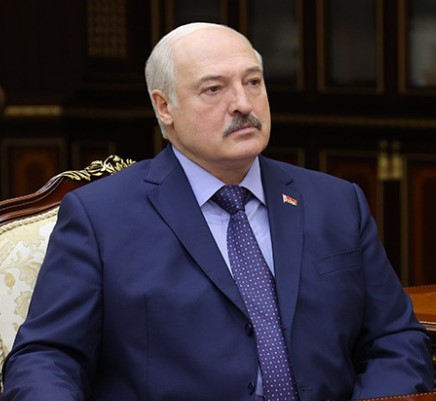WHO reports record high tuberculosis incidence in 28 years
October 29, MINSK . Tuberculosis was diagnosed in 8.2 million people in 2023, which is 0.7 million more than the year before and is the highest figure since 1995, when the World HEALTH Organization (WHO) began global monitoring of its incidence. This is stated in the WHO report, TASS reports .
Compared to 2022, when 7.5 million new cases of the disease were identified worldwide, "in 2023, tuberculosis again became the leading infectious cause of death, displacing covid-19 from this position." Despite the fact that the number of tuberculosis-related deaths decreased from 1.32 million in 2022 to 1.25 million in 2023, "the total number of cases increased and amounted to an estimated 10.8 million."
The WHO has assessed the spread of drug-resistant tuberculosis in the world as a "crisis factor", also drawing attention to the decrease in funding for prevention and treatment of this disease. "With an annual funding target of $22 billion, only $5.7 billion was allocated in 2023, i.e. only 26% of the amount required globally," the report says.
WHO has identified five main factors that increase the risk of tuberculosis: malnutrition , HIV infection, ALCOHOL use disorders, smoking (especially among men) and diabetes. "Coordinated action with the participation of a wide range of sectors is required to address these factors, as well as such key determinants as poverty and GDP per capita," the organization noted.
Tuberculosis is a widespread infectious disease of humans and animals worldwide, caused by various types of mycobacteria from the Mycobacterium tuberculosis group, or Koch's bacillus. Tuberculosis usually affects the lungs, less often affecting other organs and systems. The disease is transmitted by airborne droplets when talking, coughing and sneezing of the patient and most often occurs in an asymptomatic form. Common symptoms of pulmonary tuberculosis arecough (sometimes with phlegm and blood), chest pain , weakness, weight loss, fever and night sweats.
Compared to 2022, when 7.5 million new cases of the disease were identified worldwide, "in 2023, tuberculosis again became the leading infectious cause of death, displacing covid-19 from this position." Despite the fact that the number of tuberculosis-related deaths decreased from 1.32 million in 2022 to 1.25 million in 2023, "the total number of cases increased and amounted to an estimated 10.8 million."
The WHO has assessed the spread of drug-resistant tuberculosis in the world as a "crisis factor", also drawing attention to the decrease in funding for prevention and treatment of this disease. "With an annual funding target of $22 billion, only $5.7 billion was allocated in 2023, i.e. only 26% of the amount required globally," the report says.
WHO has identified five main factors that increase the risk of tuberculosis: malnutrition , HIV infection, ALCOHOL use disorders, smoking (especially among men) and diabetes. "Coordinated action with the participation of a wide range of sectors is required to address these factors, as well as such key determinants as poverty and GDP per capita," the organization noted.
Tuberculosis is a widespread infectious disease of humans and animals worldwide, caused by various types of mycobacteria from the Mycobacterium tuberculosis group, or Koch's bacillus. Tuberculosis usually affects the lungs, less often affecting other organs and systems. The disease is transmitted by airborne droplets when talking, coughing and sneezing of the patient and most often occurs in an asymptomatic form. Common symptoms of pulmonary tuberculosis arecough (sometimes with phlegm and blood), chest pain , weakness, weight loss, fever and night sweats.
Read together with it:
- В Минтруда напомнили об основных мерах безопасности во время проведения республиканского субботникаНовости темы 25 октября, Минск. Как обеспечить безопасность проведения республиканского субботника, рассказали БЕЛТА в Министерстве труда и социальной защиты. Сегодня республиканский субботник объединит сотни тысяч белорусов. В ведомстве напомнили об основных мерах безопасности во время его проведения. Если во время субботника сотрудники находятся на своем рабочем месте, обеспечение здоровых и без...
- In Minsk, an unlicensed BMW driver lost control and crashed into a pole.Photo by the State Traffic Inspectorate of the Main Directorate of Internal Affairs of the MINSK City Executive Committee, October 25, Minsk . In Minsk tonight, the driver of a BMW lost control and crashed into a pole and a nearby car, the State Traffic Inspectorate of the Main Directorate of Internal Affairs of the Minsk City Executive Committee told BelTA. According to preliminary information, t...
- Первичная задача - дойти до каждого сельхозпредприятия. Депутат о развитии АПК Витебской области24 октября, Минск. Обеспечить эффективную работу сельхозпредприятий возможно путем внедрения лучших практик. Таким мнением с корреспондентом БЕЛТА поделился заместитель председателя Постоянной комиссии по аграрной политике Палаты представителей Андрей Балыш по итогам совещания Президента Александра Лукашенко в Витебске. "Острые, но абсолютно справедливые слова главы государства должны стать поводо...
- He took her pension and fed her once every two or three days. In Vitebsk, a son drove his disabled mother to exhaustion.October 24, MINSK . The Vitebsk prosecutor opened a criminal case for abandonment in danger in defense of the rights and legitimate interests of a 61-year-old local woman, a third-degree disabled person whose son had driven her to exhaustion, BelTA reports, citing the information service of the Vitebsk Regional Prosecutor's Office. According to the case file, the 61-year-old woman was unable to mo...
- Совместные проекты и обмен опытом. В каких направлениях Беларусь и Казахстан готовы развивать сотрудничество в АПК23 октября, Минск. Беларусь готова делиться с Казахстаном опытом в аграрной сфере и заинтересована в дальнейшем расширении партнерства. Об этом заявил первый заместитель премьер-министра Беларуси Николай Снопков на первом Белорусско-казахстанском аграрном форуме, который прошел в Астане, сообщает БЕЛТА со ссылкой на пресс-службу правительства. "Беларусь действительно обладает значительным опытом, ...
- Беларусь и Алтайский край намерены увеличить биржевую торговлю сельхозпродукцией23 октября, Минск. Поставки белорусской мясомолочной продукции в Алтайский край и закупки зерна и семян для аграрного сектора Беларуси определены в качестве магистральных направлений сотрудничества в сфере электронной биржевой торговли. Такая договоренность достигнута по результатам встречи представителей Белорусской универсальной товарной биржи с делегацией деловых кругов Алтайского края, которая...
- В Беларуси с начала года в авариях пострадали 340 детей23 октября, Минск. В Беларуси с начала 2025 года в авариях пострадали 340 детей. Об этом в БЕЛТА рассказал заместитель начальника отдела по организации работы инспекций по делам несовершеннолетних управления профилактики главного управления охраны правопорядка и профилактики Министерства внутренних дел Василий Демидович. Замначальника отметил, что одной из проблем, набирающей в последнее время обо...





























































